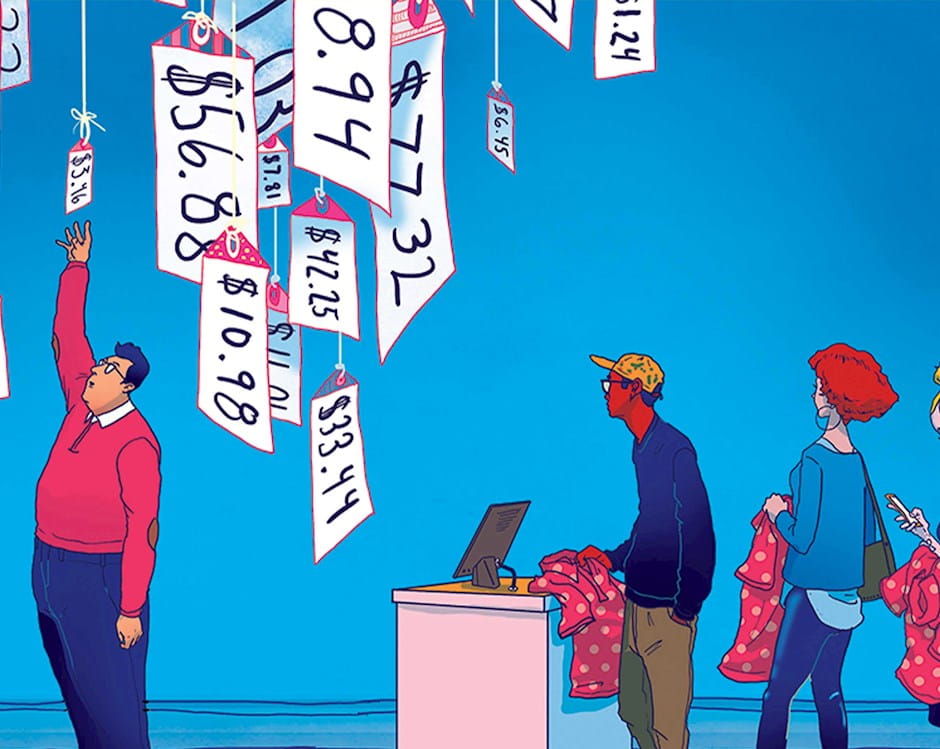
Are You Ready for Personalized Pricing?
Companies are figuring out what individual customers will pay—and charging accordingly.
Are You Ready for Personalized Pricing?Our country faces many health-related issues, from obesity and diabetes to heart disease, all tied to the way we eat. Part of the blame, especially in low-income areas, goes to food deserts—areas that either contain no grocery stores or whose stores have little or no affordable fresh foods.
The problem with that theory, however, is that as tax-based programs and nonprofits have lured grocery stores to those areas, residents didn’t change their buying habits. Some colleagues and I tracked grocery purchases of households living in food deserts that later got new grocery stores. Even after they had the option to purchase fresh and healthy foods close to home, they continued to buy the same calorie-dense, sugary and processed foods. They just didn’t have to travel as far to get them.
The problem, we believe, isn’t access to foods. Basic laws of supply and demand suggest that if people knew the value of healthy food and demanded it, stores would carry it. The real problem is nutritional literacy.
Our research found that lower-income households have systematically different nutrient preferences. The lower a household’s income, the higher its willingness-to-pay for bad dietary components like added sugars and sodium, but the lower its willingness-to-pay for good dietary components like fruit, whole grains and dairy.
That’s where small, artisanal companies can do two important things: educate the public about the importance of healthy foods and offer their products at prices that make them available to all customers.
Artisanal food-makers often take care of that first part. Many of these companies produce organic, fresh and nutritious products. It’s not surprising to see health and nutrition play large roles in these companies’ missions. Unfortunately, changing a consumer’s preferences could take years, so pricing might offer a better short-term solution.
The second part— making these products affordable— might give you pause. Artisanal products tend to be more expensive since they’re not produced at the same scale as national brands and don’t contain the number of preservatives that keep them on the shelves for as long.
The solution is personalized pricing, offering products to stores located in areas of all income levels but charging prices that meet the abilities of customers to pay.
On its face, it sounds unfair to charge people different prices. Those opposed liken it to price gouging to maximize profits. But personalized pricing can work both ways, raising prices for those who have the means and a higher willingness to pay and lowering them for those on the other end of the spectrum.
We ran an experiment a few years ago that either offered customers a set price or personalized prices based on an algorithm that determined the maximum price the customer would be willing to pay. More than 60 percent of customers offered a personalized price were charged less than the set price, and the company wound up making more profit overall.
We’ve long thought of fairness as all things being equal. But, really, a reasonable and fair price isn’t the same for people with significantly different incomes, especially for something as important as healthy foods. It’s even possible that a company should be willing to take a loss in some areas if it deems its health mission worth it. Besides recouping those losses in more affluent areas where it can charge more, a company’s shareholders may be willing to accept lower profitability when success is measured, in part, based on social impact.
Personalized pricing would expand customer bases and give companies a chance to expand nutritional education to those who need it. It’s also an opportunity for a company that espouses a health-based mission to put its money where its mouth is.
Jean-Pierre Dubé is the Sigmund E. Edelstone Professor of Marketing at Chicago Booth.
This column is part of the Chicago Booth Insights series, a partnership with Crain’s Chicago Business, in which Booth faculty offer advice for small businesses and entrepreneurs on the basis of their research.
Your Privacy
We want to demonstrate our commitment to your privacy. Please review Chicago Booth's privacy notice, which provides information explaining how and why we collect particular information when you visit our website.